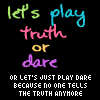by: Rajesh Rastogi
A virtual classroom or VCR is a learning environment that exists exclusively in the form of digital content that is stored, and accessed through network of computers and information systems like PDAs, notebooks, mobiles etc.
Physical or Virtual Classrooms?
The main difference between the physical classroom and the virtual classroom is those of location, time and spaces required by students and teachers to access and partake in classroom activities. In the physical classroom a physical location must be visited at a fixed time in order to participate, while a virtual classroom is not physically accessed and has no real fixed time or location which is a great boon.
The manner in which a teacher delivers educational material remains an important factor in the success of both classrooms. Though both the classrooms employ similar learning theory, curriculum design and pedagogy, live face-to-face interaction is missing in the VCR method, which may have a negative influence.
May be the solution is the blended method where physical classroom training is combined with the virtual classroom training, thus accommodating a wider range of student needs.
As teaching in both the physical and virtual classroom is learner-centered, students learn by engaging in group work, projects, discussions, and other content relating to real-world contexts. The VCR is used to provide additional communication and material, along with the learning that occurs in the physical classroom.
VCR Tools
The important communication/participation VCR tools are
* E-mail
* Discussion boards
* Chat rooms
* Whiteboards
* Video/audio conferencing
* Instant messaging
* Podcasting/vodcasting
* Teleconferencing
* Weblogs
* Wikis
These tools can be further divided into two methods of learning Synchronous and Asynchronous learning.
Synchronous VCR Learning
Synchronous learning is communication or exchange of information at the same time between two or more people i.e. in real time. In virtual classrooms, synchronous communication is used by students to communicate with fellow class members and their teachers. This provides real time interaction and encourages group discussions. Chats, Video/audio conferencing, Podcasting/vodcasting, Teleconferencing are all Synchronous learning tools.
Asynchronous VCR learning
Asynchronous learning or communication does not occur in real-time, students or teachers are not present in the same space and time as each other. The instructions are delivered at one time and the work is done at a different time. Asynchronous learning allows the student to study at their own space and in their own time, plus both the teacher and the student benefit from because the entire discussion is recorded and can be repeated continuously. E-mail, discussion groups, whiteboards, wikis, weblogs, and forums are all Asynchronous learning tools.
Conclusion
The virtual classroom transcends the boundaries of location, time and space providing a flexible learning environment for all. Schools, universities and corporate organizations benefit form Virtual classrooms because it provides an excellent way for experts to teach a geographically dispersed group of students without hassle.
About The Author
Rajesh Rastogi is an Internet infopreneur who has website on virtual learning environment; http://www.vcrwizdom.com/ Different types of LMS are discussed including learing management system, E-learning; management system and M – learning system.
Wednesday, November 07, 2007
Subscribe to:
Post Comments (Atom)







0 comments:
Post a Comment